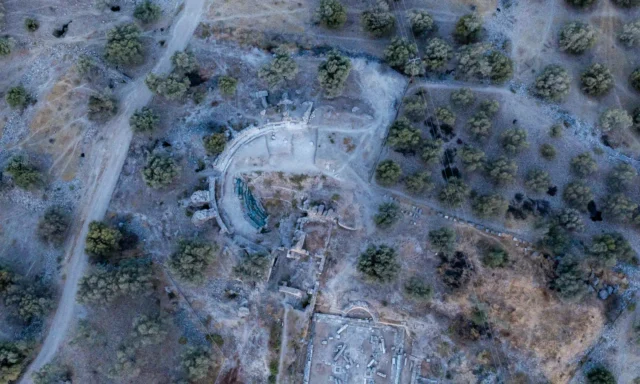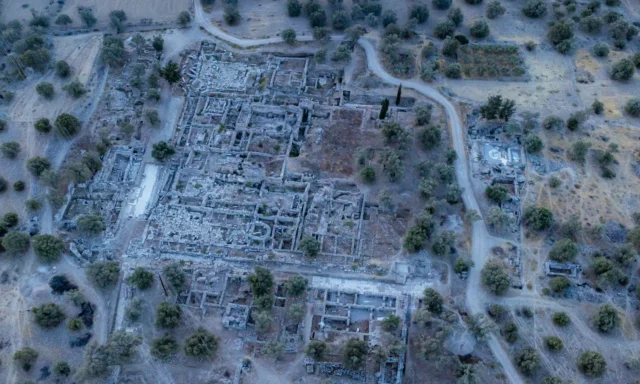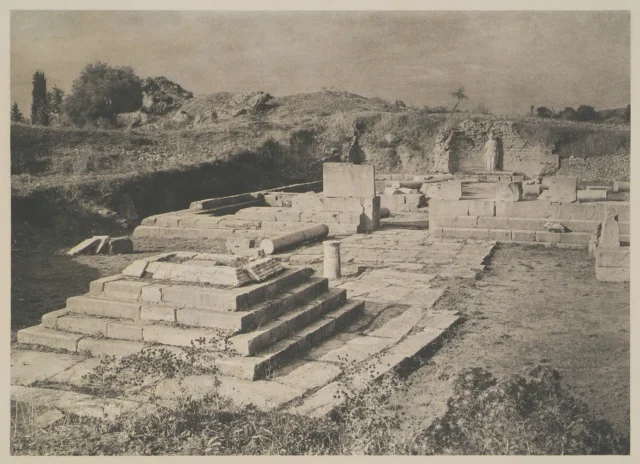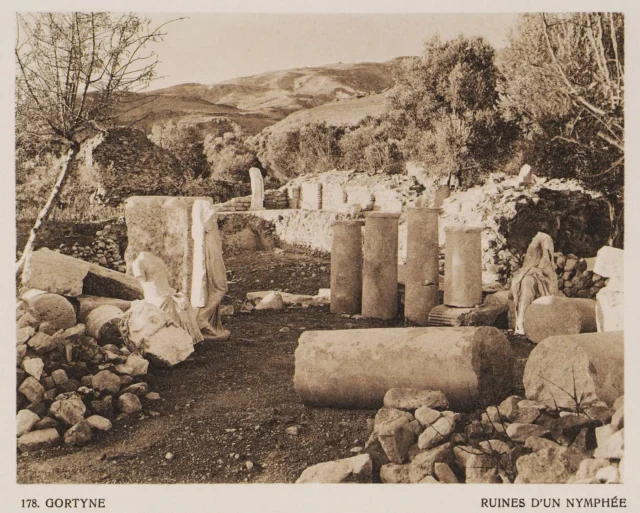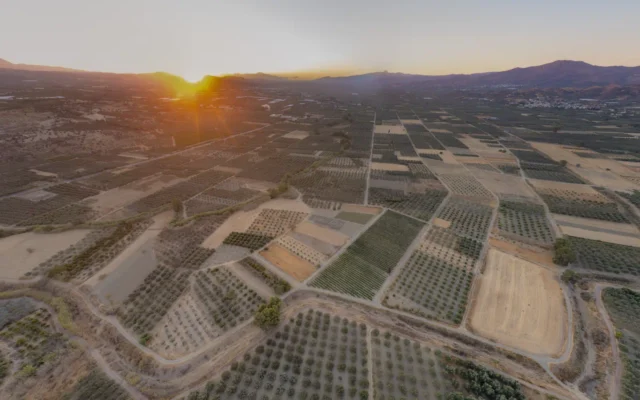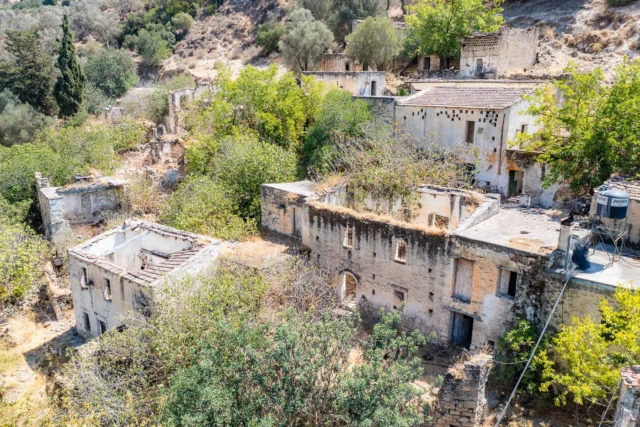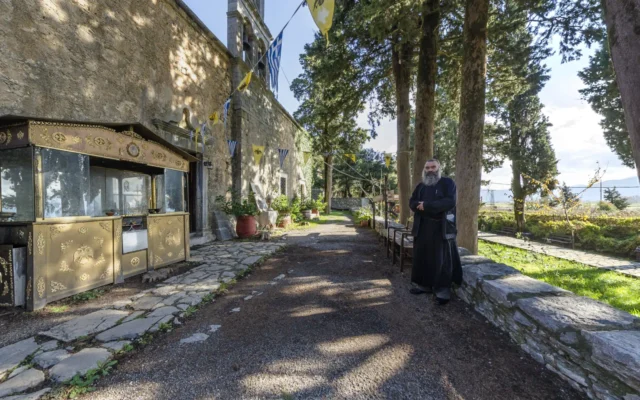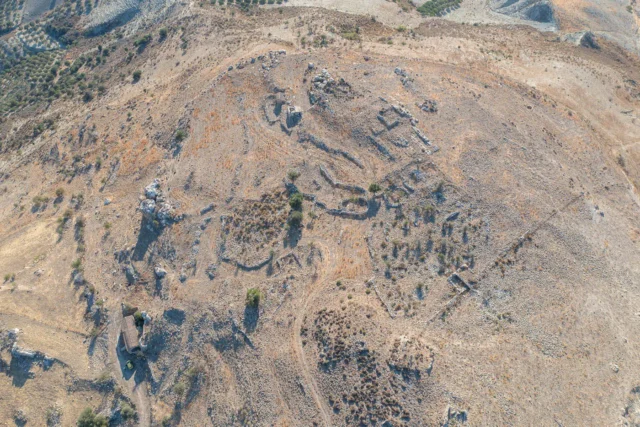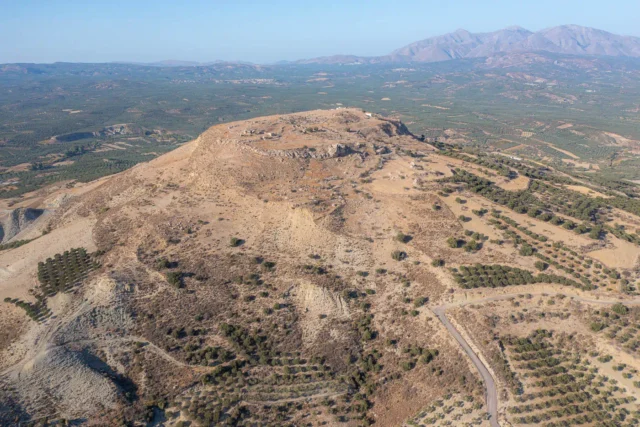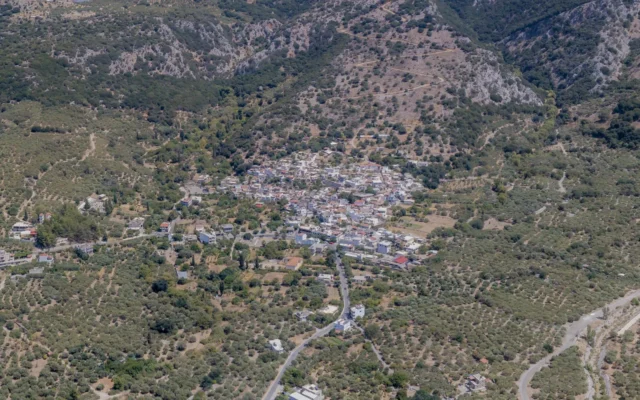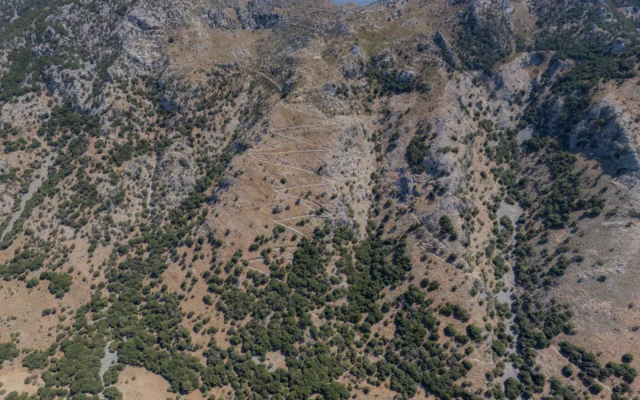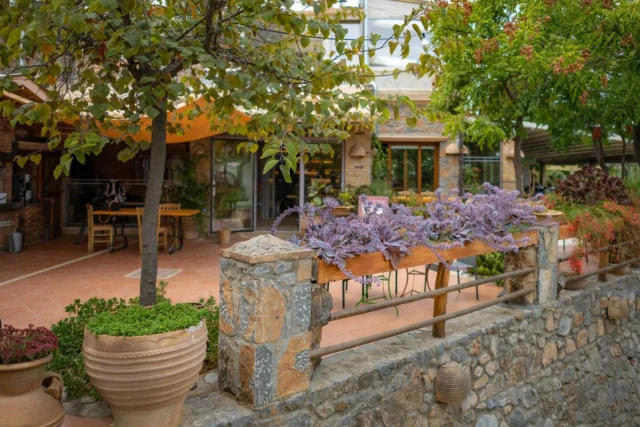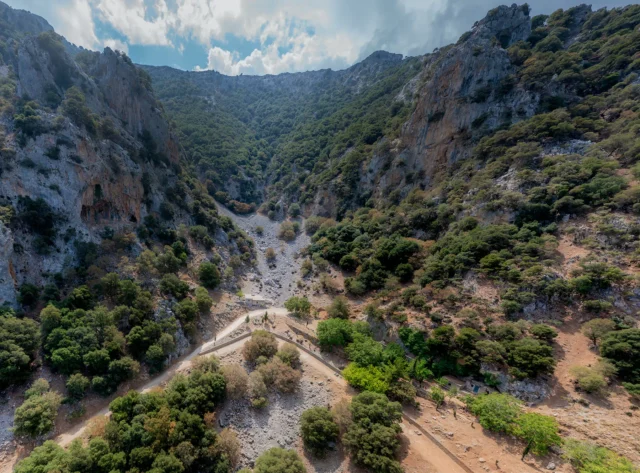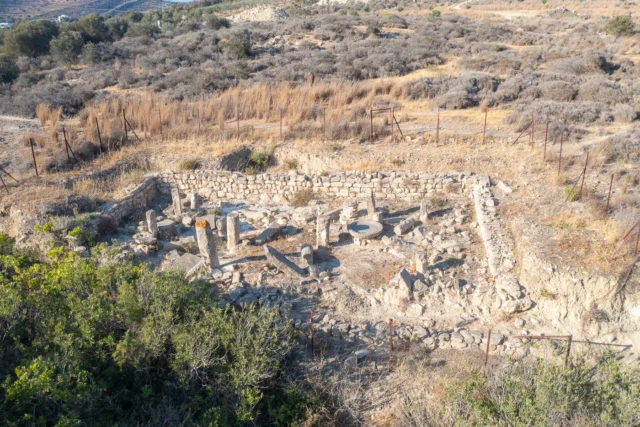829
listings found
Categories
Active filters:
The Great Theater of Gortyna
Located on the Acropolis hill's southeastern slopes, this Roman-era theater was built in the 2nd century CE. It features a semicircular cavea with a 93-meter diameter, accommodating around 7,500 spectators. This multifunctional venue hosted theatrical performances, religious festivals possibly linked to the cult of Apollo, and potential civic gatherings for the Koinon ton Kretaieon. After modifications in the 3rd century CE, it fell into decline during the Late Antique period and was abandoned.
The Pythion Theater in Gortyna
The Pythion Theater in Gortyna, an ancient Roman theater that hosted performances, ceremonies, and gatherings.
The Praetorium of Gortyna
The Praetorium of Gortyna, the administrative heart of Roman Crete.
The Temple of Apollo Pythios at Gortyna
The Temple of Apollo Pythios in Gortyna, an ancient sanctuary that witnessed centuries of religious and cultural activity.
The Nymphaeum Block in Gortyna
Explore the Nymphaeum Block in Gortyna, a microcosm of the city's evolution from Hellenistic to Byzantine times. Discover its temples, fountains, and workshops that tell the story of this vibrant urban center.
Acropolis of Gortyna
Discover the Acropolis of Gortyna, a Byzantine-era stronghold on Crete. Explore its fortifications, churches, and remnants of a once-thriving community.
Messara plain
The largest plain in Crete is situated in the south of Heraklion, between the Psiloritis and Asterousia mountains, with a 55 km coastline on the Libyan Sea. Its fertile land, irrigated by the Geropotamos River, is ideal for cultivating olives and grapes. A center of civilization since the Neolithic period, it contains significant archaeological sites, including the Minoan palace of Phaistos, the royal villa of Agia Triada, and the port of Kommos. Gortyn later became the Roman capital of Crete.
The Abandoned Village of Apolycnos
Apolycnos, a now deserted village near Moires in southern Crete, offers a glimpse into traditional Cretan life. Mentioned as Apolchino in 1248, the village's population dwindled throughout the 20th century due to urbanization. Despite abandonment, the village's stone buildings and the church of Saint Panteleimon remain, reflecting its history from the Byzantine era through Venetian rule and later periods. The surrounding landscape includes a small gorge. Population records from 1583 to 2021 document the village's decline.
Agios Ioannis at Roukani
This 11th-century Byzantine church in Roukani, Heraklion, is a significant example of cross-in-square architecture. Dedicated to Saint John (Rigologos), its design features a central dome on four columns with pendentives and an exterior with blind arches. Though its interior frescoes are fragmented, its structure suggests architects from Constantinople. The site's history is layered, with a Roman cistern and Venetian-era tombs nearby. A lead seal of Abbot Andreas Roukanis confirms its monastic past.
Ancient Priansos
Priansos was a significant autonomous ancient city located on a flat mountaintop near modern-day Kasteliana in the Monofatsi province of Crete, offering commanding views. Existing from the Archaic period, it reached prominence during the Hellenistic era, evidenced by coins featuring Hygeia and Poseidon, indicating a focus on health and maritime trade. Inscriptions show political ties with Gortyn and Ierapytna, and its oath invoked deities like Hestia and Apollo. Priansos allied with Eumenes II of Pergamon in 170 BCE. In the early 13th century CE, Venetians built the Belvedere castle on the same site, likely reusing materials from the ancient ruins. Today, archaeological remains, including structures and tombs, are visible at the partially excavated site.
Kastello Kastelianon or Rizokastro, or Belvedere
Kastello Kastelianon, a historic fortress in Crete, witnessed Byzantine, Genoese, and Venetian rule. Explore its ruins and the Church of the Dormition of the Theotokos.
Gonies, Chersonissos
Gonies is a settlement located in the Heraklion regional unit on the island of Crete, Greece. It belongs to the Municipality of Chersonissos.
The Minoan Path: Connecting Kastamonitsa and Lyktos to the Lasithi Plateau
This ancient route, of debated Minoan origin, connected the settlements of Kastamonitsa and Lyktos to the fertile Lasithi Plateau. It is famously linked to the legend of King Minos's nine-year pilgrimage from Knossos to commune with Zeus in the Diktaian Cave. The path facilitated trade and pilgrimage, with landmarks like the Vidiani and Kallergi Monasteries along the way. Its strategic importance continued into the Venetian era. Today, this well-preserved section is part of the E4 European path.
Aposelemis river dam
The Aposelemis Dam, located on Crete's Aposelemis River, is an earthfill embankment dam that serves as a vital water source for Heraklion and Agios Nikolaos. With a reservoir capacity of 27.3 million cubic meters, it captures water from the Lasithi Plateau and Aposelemis basin. Built from locally sourced phyllite and limestone, the 61-meter-high dam features a central impervious clay core and a 660-meter crest. The project included relocating the village of Sfendyli, and addressed environmental impacts through mitigation measures. Treated water is distributed via a 74-kilometer aqueduct, aiding agriculture, tourism, and flood control. The dam faces challenges from rainfall fluctuations and climate change, necessitating ongoing monitoring and sustainable water management strategies, including alternative water sources and conservation. It stands as a complex project with environmental, economic, and social implications, embodying both progress and the need for sustainable water practices in Crete.
Makrygianni, Mylopotamos
Makrygianni is a settlement located in the Rethymno regional unit on the island of Crete, Greece. It belongs to the Municipality of Mylopotamos.
Agia Fotini Cave and Agia Anna Church
Located on Mount Louloudaki near Avdou village in Crete, this cave is formed by limestone erosion. Accessible via a dirt road and path, an entrance corridor, once an underground riverbed, leads to a larger chamber functioning as the church of Agia Fotini. A prominent stalagmite stands above the altar. The site, also a refuge during the Cretan Revolts, is believed to possess healing properties for infertility, linked to a tradition of the Virgin Mary creating it for Saint Fotini.
Minoan villa at Kalamaki
Minoan villa at Kalamaki, Crete, near the Sfakoryako stream. Archaeological findings from the 1978 & 1979 surveys suggest a thriving Minoan settlement in the region.
The Abandoned Village of Sfendyli
Sfendyli, a village in Crete, Greece, is now partially submerged under the Aposelemis Dam reservoir since 2012. Documented as early as 1577 and once a fiefdom during the Venetian era, the village was abandoned after residents were compensated. The fluctuating water levels create a spectacle for visitors. The 14th-century Byzantine church of Agios Theodoros remains. Nearby, a Minoan cemetery with 65 skeletons was discovered, adding to the area's historical significance.










